Films with theme "Documentary films about health care", sorted by revenue
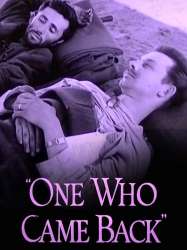
One Who Came Back (1951)
Origin USA
Themes Documentary films about war, Documentary films about historical events, Documentaire sur une personnalité, Documentary films about health care, Films about disabilities, Political films
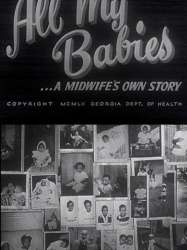
Directed by George C. Stoney
Origin USA
Genres Documentary, Historical
Themes Documentary films about health care

Psychiatric Nursing (1958)
Origin USA
Genres Documentary
Themes Medical-themed films, Documentary films about health care, Films about psychiatry

Boys Beware (1961)
, 10minutesOrigin USA
Genres Drama, Documentary
Themes Medical-themed films, Films about drugs, Documentary films about law, Documentary films about health care
Actors Sid Davis

The House Is Black (1963)
, 20minutesDirected by Forough Farrokhzad
Origin Iran
Genres Documentary
Themes Documentary films about health care
Actors Forough Farrokhzad
Une vision poetique de la vie des lepreux de Babadaghi, leproserie de Tabriz.
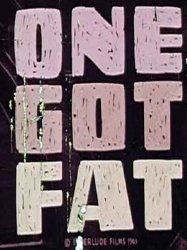
One Got Fat (1963)
, 15minutesOrigin USA
Genres Documentary
Themes Medical-themed films, Films about drugs, Documentary films about law, Documentary films about health care, Children's films
Actors Edward Everett Horton, Kevin Lindsay
In the film, ten friends, who are children with monkey faces and tails, plan on going to the park for a picnic. They all ride there on their bikes, but each one meets a different fate on their way to the park as a result of their failure to follow specific bike safety rules (like not making hand signals, not reading traffic signs, not riding with traffic, riding double, or riding on the sidewalk). One by one, each of the friends makes a mistake and suffers a horrible fate. In the end, only one of the friends (who not only followed all the bike safety rules, but is also a normal human, whose face is not shown until the very end) makes it to the park and eats all the food by himself. At the start of the PSA, Slim gave the human his picnic because it was large and the human had a rear basket. Seeing this, the others persuaded him to take their food, meaning he has it at the end. Thus, as the title says, "One got fat!" Three of the Monkeys are seen in hospital beds.
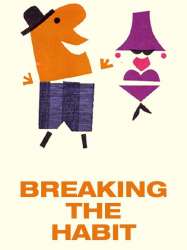
Breaking the Habit (1965)
, 5minutesDirected by John Korty
Origin USA
Genres Documentary, Animation
Themes Medical-themed films, Films about drugs, Documentary films about law, Documentary films about health care, Films about cancer

Perversion for Profit (1965)
, 31minutesOrigin USA
Genres Documentary
Themes Medical-themed films, Films about drugs, Films about sexuality, Films about pornography, Documentary films about business, Documentary films about the film industry, Documentary films about law, Documentary films about health care
Actors Damian O'Flynn

Home for Life (1967)
, 1h20Genres Documentary
Themes Documentaire sur une personnalité, Documentary films about health care

Warrendale (1967)
Directed by Allan King
Origin Canada
Genres Documentary
Themes Medical-themed films, Documentaire sur une personnalité, Documentary films about health care, Films about psychiatry, Films about disabilities
Le cinéaste expose les traitements expérimentaux dispensés à 12 enfants atteints de troubles affectifs dans l’établissement de Warrendale, près de Toronto. Cet établissement, d’abord considéré comme novateur, s’est rapidement retrouvé au cœur de plusieurs controverses.
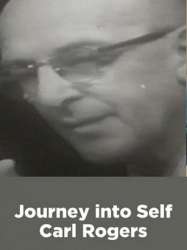
Journey Into Self (1969)
, 47minutesOrigin USA
Genres Documentary
Themes Medical-themed films, Documentary films about health care, Films about psychiatry
Actors Stanley Kramer
Les docteurs Carl Rogers et Richard Farson mènent une séance de thérapie de groupe avec huit personnes: parmi eux trois hommes d'affaires, un étudiant en théologie, un professeur, un directeur d'école, une femme au foyer et un employé.

A Matter of Fat (1969)
Directed by William Weintraub
Origin Canada
Genres Documentary
Themes Documentary films about health care, Films about disabilities
Actors Lorne Greene

The Eye of the Storm (1970)
Origin USA
Genres Documentary
Themes Medical-themed films, Films about racism, Documentary films about racism, Documentary films about law, Documentaire sur une personnalité, Documentary films about health care, Films about psychiatry
William Peters follows Jane Elliott's conversely controversial and lauded schoolroom exercise of dividing an otherwise homogenous group of elementary school kids by their eye color. It was a demonstration of prejudice and discrimination meant to teach the students about the unfairness of racism, developed as a response to the shooting of Martin Luther King in April 1968. The film records Elliott in 1970 while conducting the exercise for the third time.
 , 22minutes
, 22minutesDirected by Joseph Strick
Origin USA
Genres War, Documentary
Themes Politique, Documentary films about law, Documentary films about war, Documentary films about historical events, Documentaire sur une personnalité, Documentary films about health care, Political films
Le film apporte des témoignages de cinq soldats à propos du Massacre de Mỹ Lai intervenu en mars 1968 lors de la guerre du Viet Nam, et ayant fait plus de 500 victimes dont beaucoup de femmes, enfants et vieillards. Sur les 110 soldats qui ont participé au massacre, sept ayant démissionné de l'armée acceptent de témoigner, mais deux mentent en affirmant n'y avoir pas participé, et leur témoignage n'est finalement pas retenu. Sur les cinq autres, trois essayent de se justifier.
 Connection
Connection
